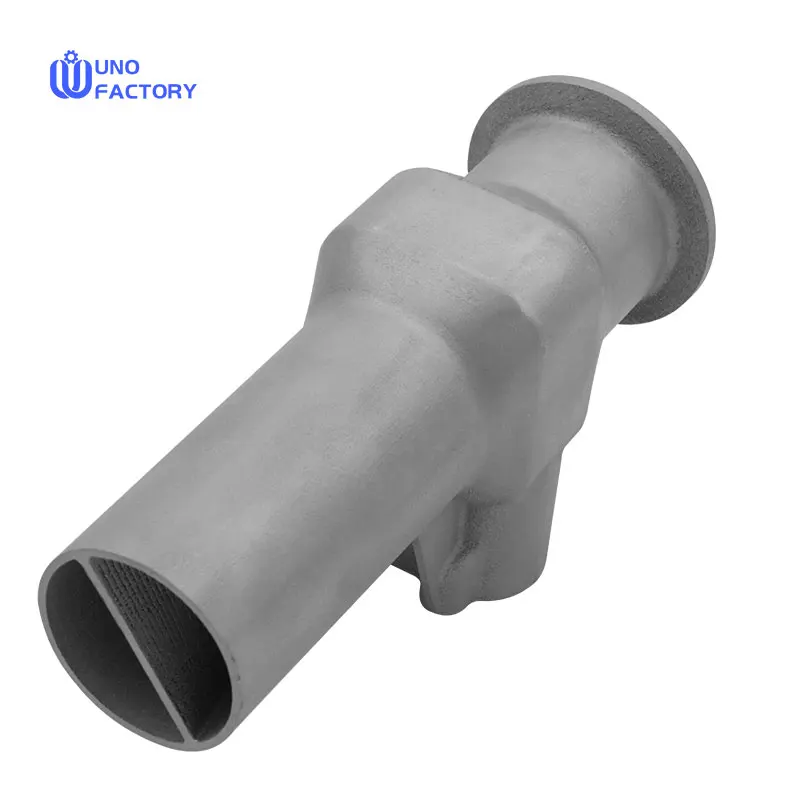Time to read: 6 min

Casting techniques have been a cornerstone of manufacturing for over a century, with investment casting and die casting emerging as two dominant methods. While they share some foundational principles, each serves distinct purposes and offers unique advantages. This comprehensive guide delves into the intricacies of both processes, outlining their benefits and identifying the scenarios in which one might outperform the other.
Casting, a manufacturing art form with a rich history, has evolved to accommodate the complex demands of modern industry. Two prevalent techniques, investment casting and die casting, stand out for their versatility and precision. This article aims to dissect these methods, providing clarity on their operational nuances, benefits, and optimal use cases.
What Is Investment Casting?
Investment casting, also known as the lost-wax casting process, revolves around the creation of detailed wax patterns that are subsequently encased in a ceramic shell. The wax is melted away, leaving a void that is perfectly suited to receive molten metal, which upon cooling, solidifies into the final product.
Key Advantages of Investment Casting
- Design Flexibility: This method excels in producing complex geometries with a high degree of precision, making it suitable for a wide array of materials and applications.
- Tight Tolerances: Investment casting is renowned for its accuracy, often achieving near-net-shape components that minimize post-processing requirements.
- Exceptional Surface Finish: The process yields parts with a superior finish quality, rivaling or exceeding that of other casting methods.
- Customizable Size Range: It accommodates a broad spectrum of part sizes, from small to large, without the need for economies of scale.
What Is Die Casting?
Die casting involves the forceful introduction of molten metal into reusable metal dies, under high pressure. This rapid cooling process results in parts with fine detail and excellent dimensional stability.
Key Advantages of Die Casting
- High Mechanical Properties: Die casting produces parts with high strength and hardness, crucial for applications requiring structural integrity.
- Dimensional Accuracy: The parts maintain their precise dimensions over time, essential for components in precision machinery.
- Complex, Thin-Walled Parts: Die casting is adept at creating intricate, thin-walled components with a high strength-to-weight ratio.
- Smooth Surface Finishes: The process results in parts with a smooth, uniform surface, often reducing or eliminating the need for secondary finishing processes.
A Detailed Comparison: Investment Casting vs. Die Casting
To make an informed decision between investment casting and die casting, it's essential to understand their differences in terms of process, materials, design complexity, part size, surface treatment, production volume, tolerance, and cycle time.
| Attribute | Investment Casting | Die Casting |
|---|---|---|
| Process | Ceramic shell molding | High-pressure die filling |
| Materials | Ferrous and non-ferrous metals | Non-ferrous metals |
| Design Complexity | High | Moderate |
| Part Size | Small to large | Large |
| Surface Treatment | Superior | Good |
| Production Volume | Low to medium | High |
| Tolerance | Tight | Standard to precision |
| Cycle Time | Longer | Rapid |
Working Process
Investment casting begins with wax patterns, while die casting uses metal dies. Each process has its unique approach to creating the final cast part.
Casting Material Selection
Investment casting accommodates a wider range of materials, including ferrous metals, whereas die casting is typically limited to non-ferrous metals.
Design Complexity
Investment casting offers greater design flexibility, catering to complex and intricate parts that may be challenging for die casting.
Part Size
Investment casting is suitable for a variety of part sizes, from small to large, whereas die casting excels in producing larger components.
Surface Treatment
Investment casting generally provides a better surface finish, often necessitating less post-processing compared to die casting.
Production Volume
Investment casting is ideal for low to medium production volumes, whereas die casting is designed for high-volume manufacturing.
Tolerance
Both processes offer tight tolerances, but investment casting tends to have an edge in precision for smaller components.
Cycle Time
Die casting boasts faster cycle times, making it suitable for mass production, while investment casting has a longer cycle time due to its detailed process.
Conclusion: Die Casting vs. Investment Casting - Choosing the Best Fit
The choice between die casting and investment casting hinges on the specific requirements of your project. For large-scale production of complex, precision parts, die casting may be the preferred option. Conversely, for intricate designs with lower production volumes, investment casting is often the go-to choice.
If you're uncertain about which casting method to select for your project, consult with industry experts. Unofactory is equipped to provide guidance and services in both investment and die casting, ensuring your manufacturing needs are met with precision and efficiency.




